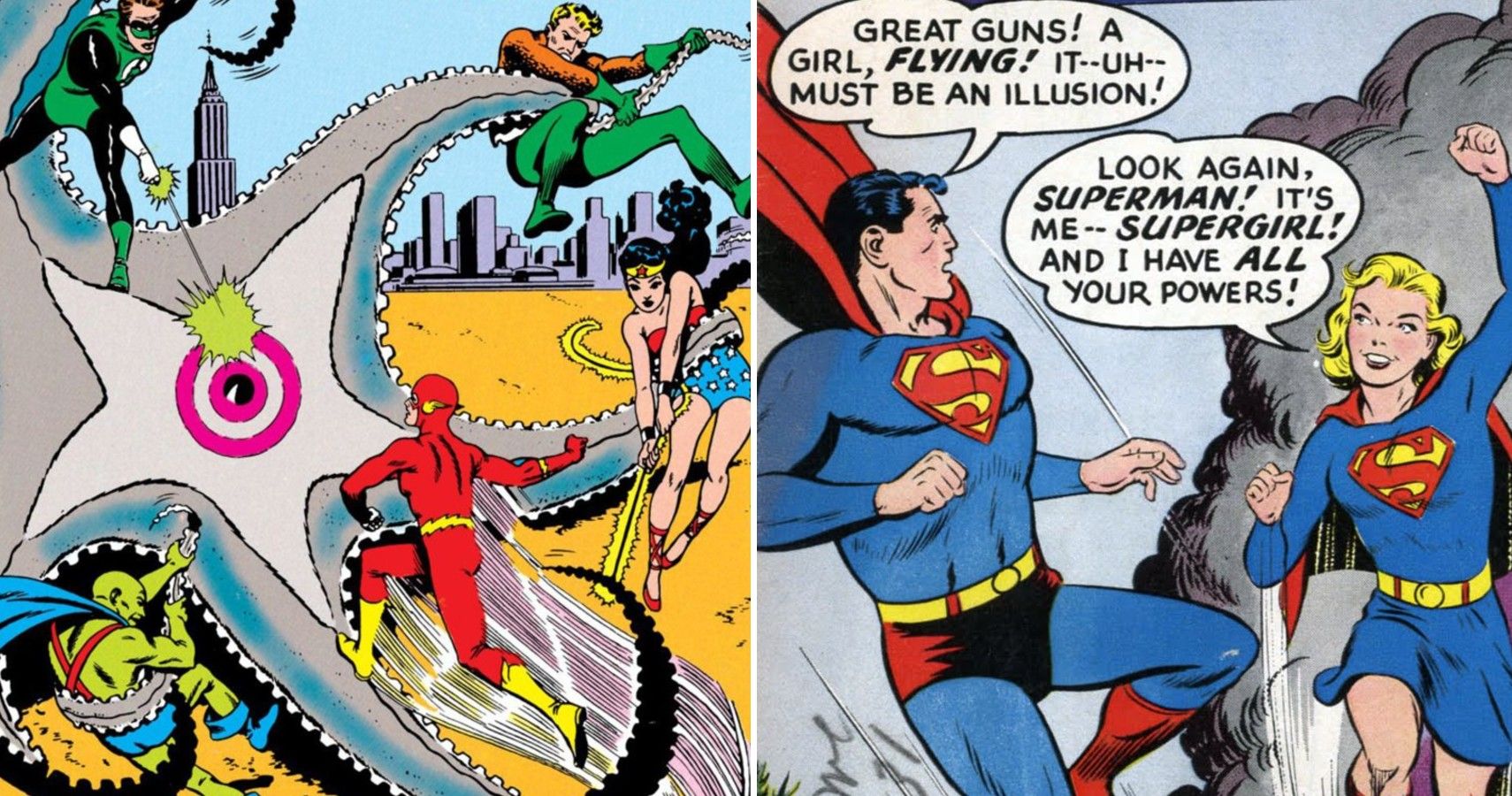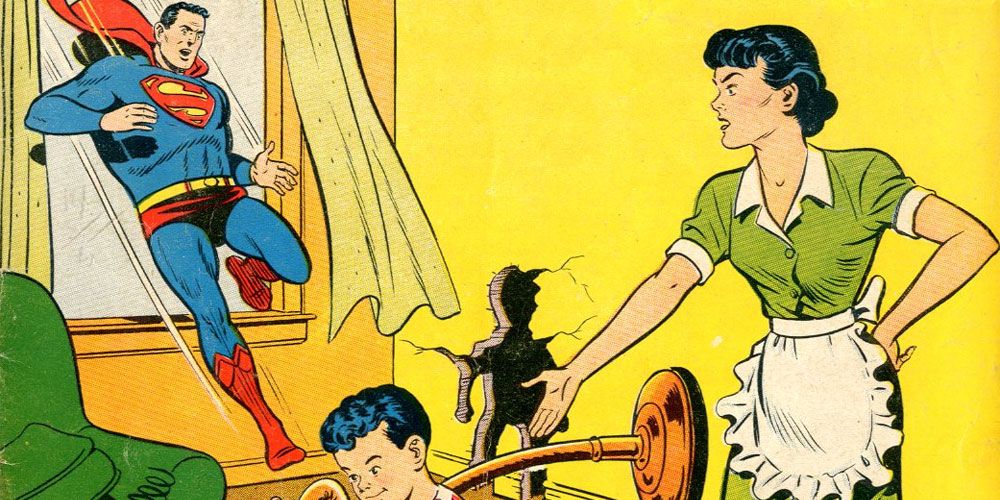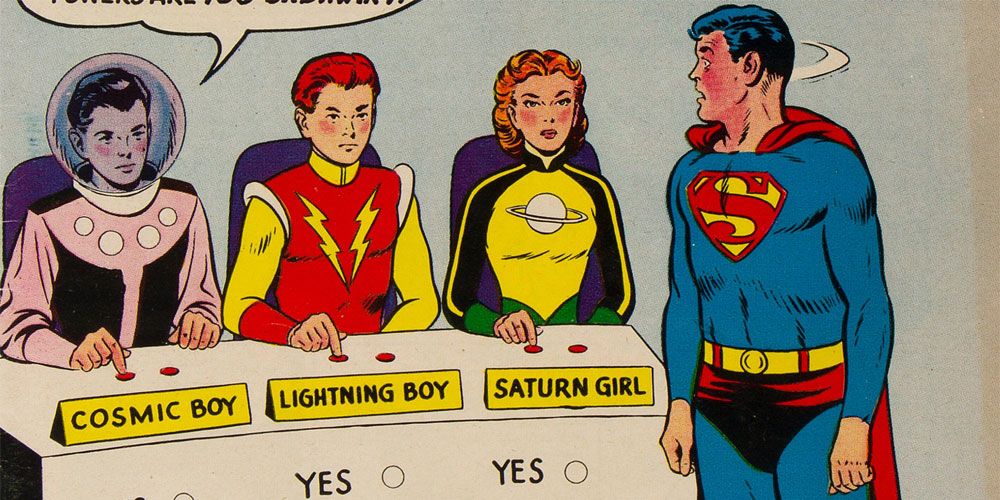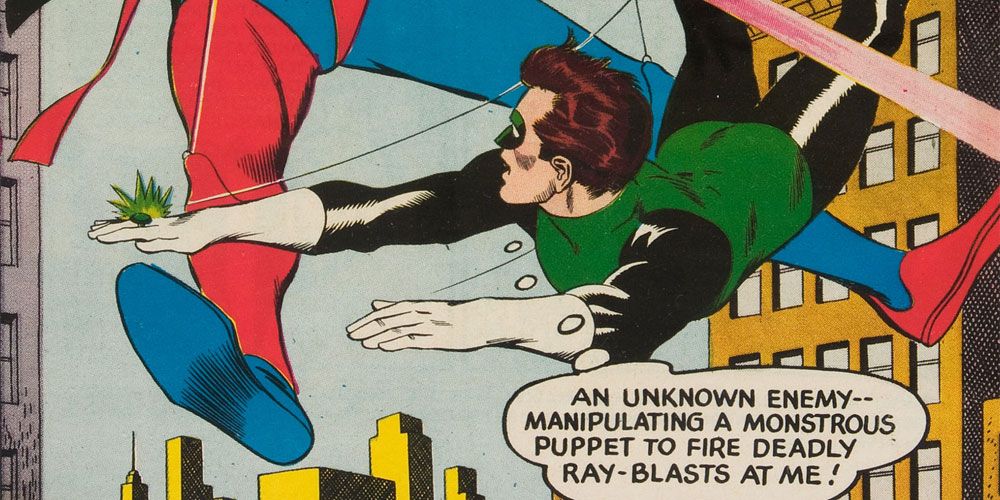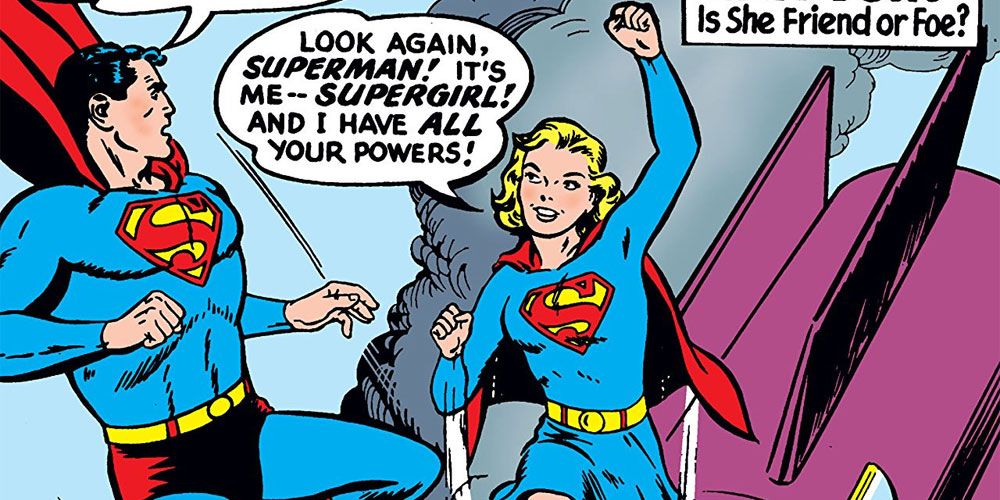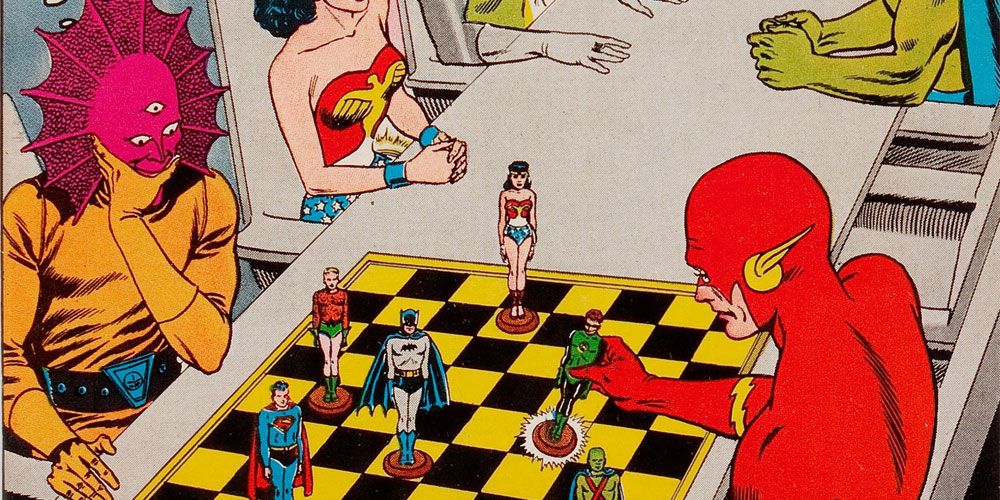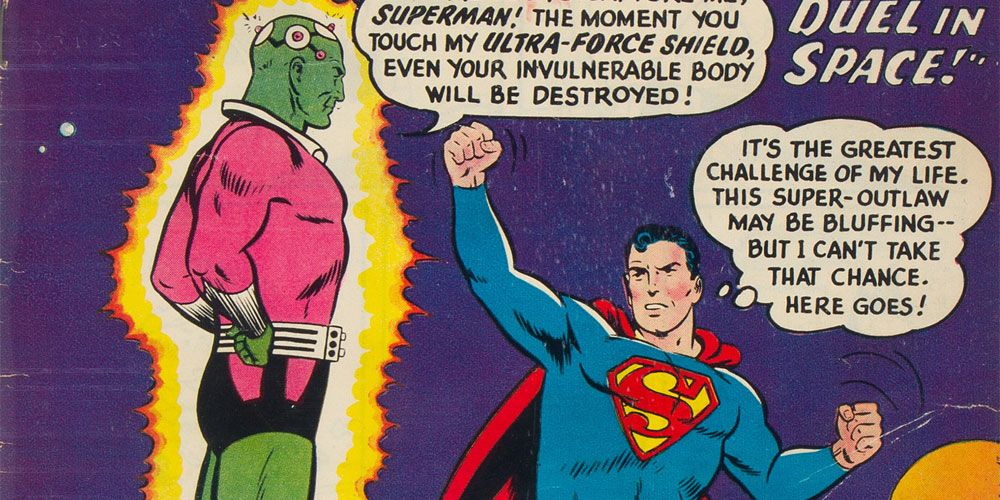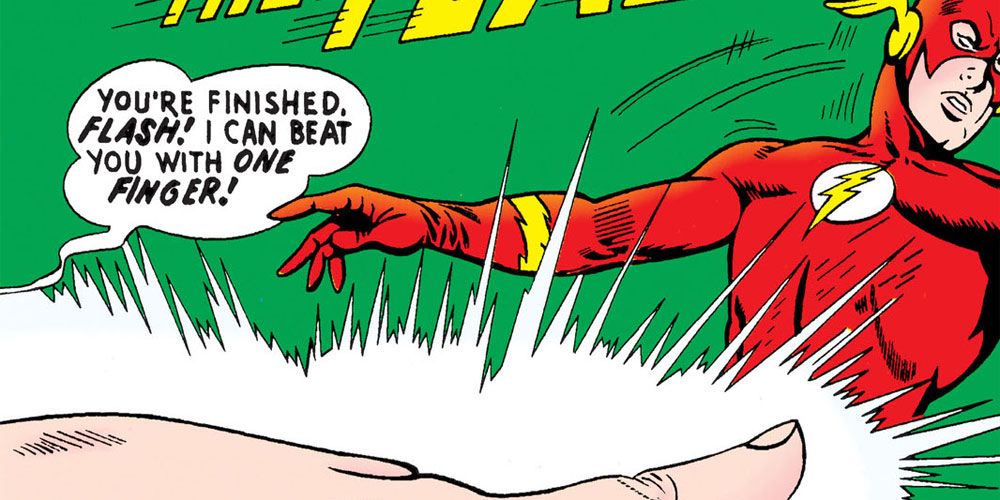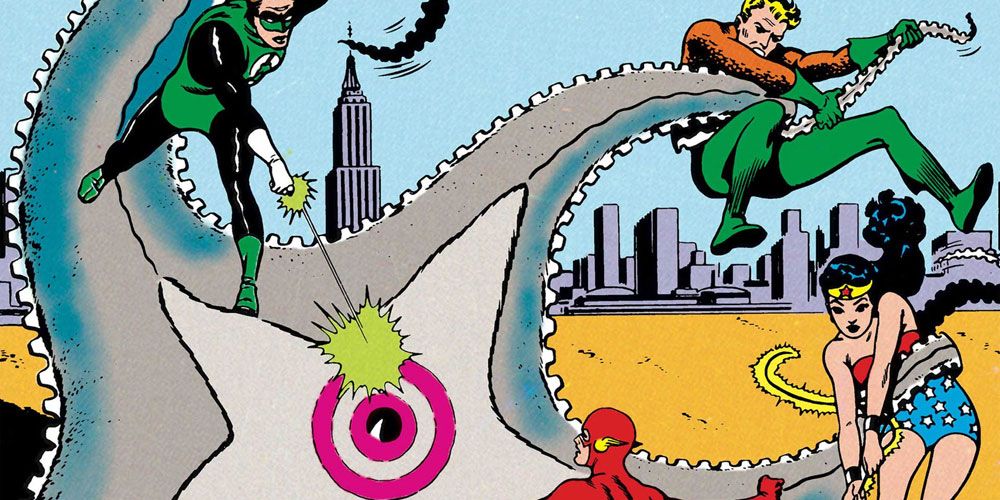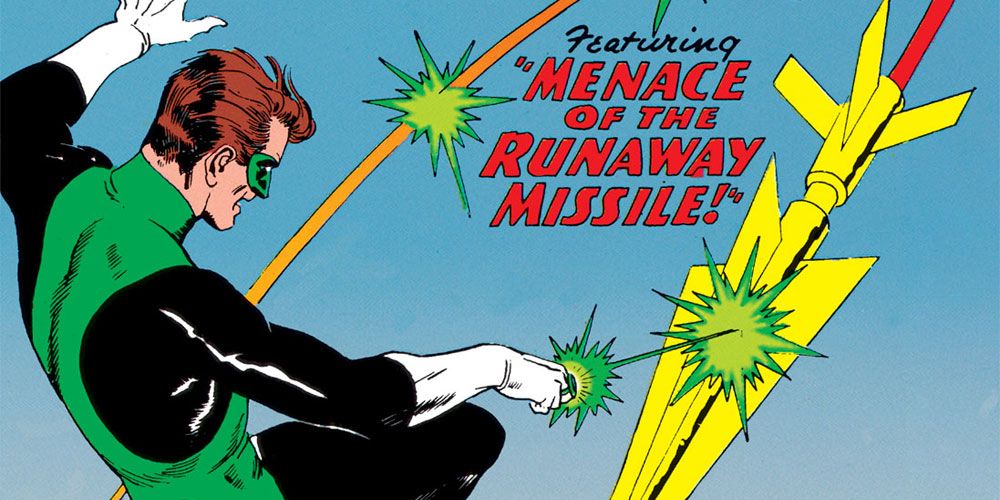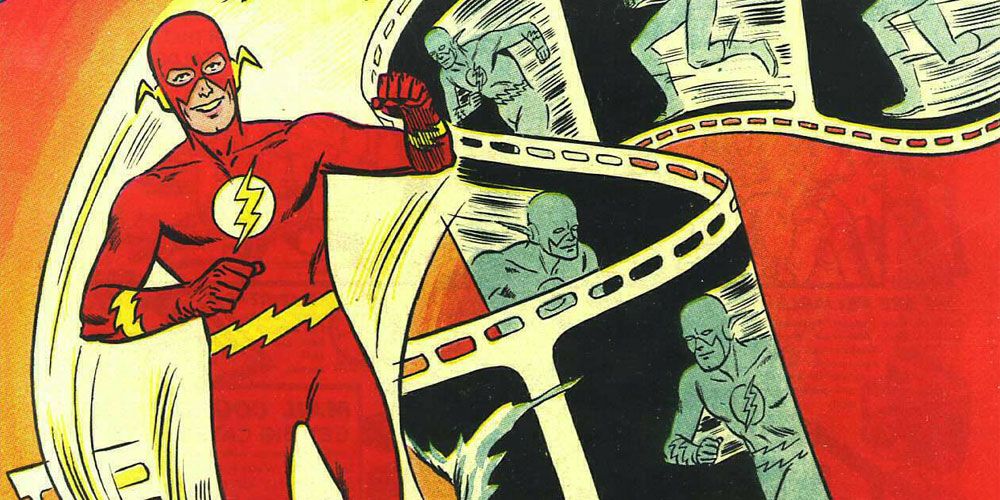The Silver Age was an explosion of new characters and a lot of times, in all of the talk of Marvel's Silver Age, people tend to forget that DC Comics had an explosion of excitement, even before Stan Lee and Jack Kirby produced Fantastic Four #1. The Silver Age erupted a massive list of new heroes and villains and set the stage for the massive pop-culture filled with iconic super-heroes.
This list is based on value and considers the first DC Comics issue of the Silver Age to be Showcase #4. This does not put Martian Manhunter's first appearance in the Silver Age, but the consensus is that the Silver Age started with the Flash. This list is also ranked by value according to research at comicspriceguide.com, which seems to be the most objective way to properly rank these comics. It also brings in a few surprises! Without further ado, here are DC Comics' 10 best Silver Age stories.
10 Showcase #9 (Lois Lane's First Solo Series)
DC Comics may have launched a wave of new heroes, but one of the most expensive issues to own is the launch of Lois Lane's comic book series, which gave focus to Superman's girlfriend. DC's Silver Age focused a lot around Superman and his supporting characters, making a Lois Lane series all but inevitable.
What many people may not realize is that this series was DC's third best-selling title at one point, surpassed only by Superman and Superboy. The series ran for 137 issues, ending in 1974, including the often-discussed and controversial issue #106, "I Am Curious (Black)" where Lois became African-American.
9 Adventure Comics #247 (The Legion of Super-Heroes' First Appearance)
The Legion of Super-Heroes has one of the most devoted fan bases in comics. The popularity of this issue has been reduced by many reboots over the years, but it remains an important comic for introducing the future team of super-powered teens, starting with their hazing of Superboy before they let him into their super-hero club.
The Legion would become one of the most popular groups of the Silver Age, eventually taking over Adventure Comics, before floundering and finding a home in the pages of Superboy. Of course, they took that title over as well, which shows some of the influence this team has had over the years.
8 Green Lantern #1 (The Guardians of the Universe's First Appearance)
With the first issue of Green Lantern Hal Jordan in his title, the Guardians of the Universe make their first appearance. They provide Hal a chance to retell his origin for new readers. It also has an adventure with a villain named the Puppet Master, who would be renamed the Puppeteer.
Oddly enough, at the end of their appearance, the Guardians erase Hal's knowledge of them, which seems very strange in retrospect. Hal Jordan is a protector of a sector of space, but knowledge of who it is he is working for is denied to him. They would return six issues later and become a regular part of Hal's stories and the DC Universe as a whole.
7 Action Comics #252 (Supergirl's First Appearance)
With a popular ongoing television series, Supergirl has become a fixture of the modern DC Universe, although her popularity predates her televised resurgence. Even when she wasn't around, her absence loomed large and different versions of her were tried out before DC would return Superman's cousin to continuity. Her entrance in Action Comics #252 is iconic and almost as recognizable as her cousin's.
Coincidentally, this is also the first appearance of one of Superman's most deadly foes, Metallo. Reading the story today, it seems like he's not going to be a recurring villain, unlike the young girl that debuts at the end of the issue. Supergirl is set up as a character to return, established with her own secret identity and status as "Superman's secret weapon."
6 Justice League of America #1 (The Justice League's Very First Issue)
The Justice League of America (JLA) got its own title in late 1960 following its successful debut a few months earlier. Gathering together all of DC's published heroes of the time in one team was a concept brought back from the Golden Age Justice Society. In the Silver Age, it drove a trend that created continuity for a shared universe and set up numerous crossovers between characters.
Amazingly, Batman and Superman, despite being the Justice League's most famous members, make a cover appearance only as chess pieces. Believe it or not, they wouldn't appear on the cover as part of the League until the tenth issue. For a time when Superman dominated its comics, it's quite odd that this groundbreaking series didn't advertise his presence on the team.
5 Action Comics #242 (Brainiac's First Appearance)
Superman has quite a few villains that provide a threat that only he can match, with Brainiac being one of those few villains that have a Silver Age origin. Despite his appearance on the cover, Brainiac wouldn't get the electrodes on his head until his next appearance.
Brainiac serves some of the same villainous purposes as Lex Luthor, being a mental match for Superman's physical might. Brainiac differs significantly in being an alien menace, where as Luthor is just an otherwise regular human being. Brainiac was also made a very personal menace to Superman, having shrunken and stolen the Kryptonian city of Kandor.
4 Showcase #8 (The Flash's Second Appearance)
The Flash is such a seminal character in DC Comics' Silver Age, even his second appearance rates above other characters' first appearances. This issue introduces the first of Flash's rogue's gallery, Captain Cold. The Rogues have become almost as iconic as he is mainly since while costumed villains, almost all of them have no natural superpowers at all.
It could be argued that if a collector wanted to amass an attainable complete run of prestigious runs, they could do far worse than completing a run of Showcase. It was the testing ground for a variety of new series and characters. It will appear on this list two more times, and there are several that just barely missed the top ten.
3 The Brave & the Bold #28 (The Justice League's First Appearance)
The series Showcase wasn't the only testing ground for new series. The The Brave and the Bold also tried out new ideas and characters. One of the first successes was a gathering of its most well-known heroes, the Justice League of America.
Battling Starro the Conqueror on the cover provides them with a multi-pronged attack. Every hero gets to demonstrate at least some of their abilities. His presence as the very first threat the Justice League faced in comics marks Starro as almost a rite of passage for subsequent versions of the JLA.
2 Showcase #22 (Green Lantern's First Appearance)
With the success of the Flash, DC Comics sought to revamp another of its Golden Age heroes that had not been published in some time. Green Lantern became the inheritor of a power ring that made him the protector of the sector of space that contained the Earth.
The first appearance also introduces Carol Ferris, the love interest for Hal Jordan, but she rebuffs him, with her being his boss. An interesting Superman-like love triangle is introduced where Carol has an interest in Green Lantern but twists it when she rebuffs the heroic alter ego as well, perhaps more coldly.
1 Showcase #4 (The Flash's First Appearance)
The Flash jumps out from the cover, demonstrating the speed of his Golden Age predecessor. It's the cover that announces the arrival of a new age for comic books, without even realizing it. What many people don't realize is that the time between the last Golden Age Flash appearance and this comic is only five and a half years.
Nevertheless, the Flash ushered in the Silver Age with a story that even featured the hero breaking the time barrier with his speed. The Silver Age saw superhero comics borrowing heavily from science fiction. Faced with the new Comics Code Authority, DC Comics used super-heroes as a way of telling stories engagingly. It's only fitting that the Flash tested the ground and with him, a new generation of heroes came running across it.

